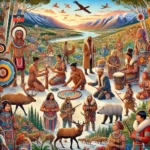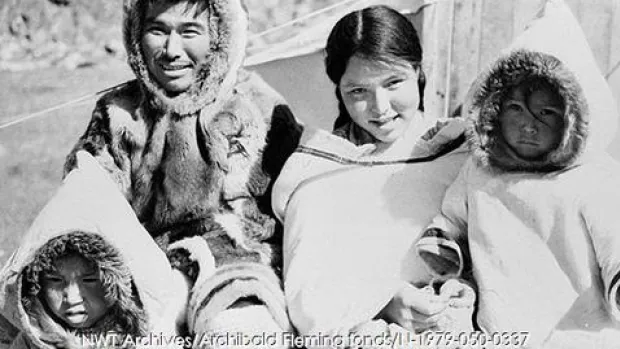The Inuit are an Indigenous people of the Arctic, traditionally inhabiting regions spanning Alaska (USA), Canada, and Greenland. Their culture, shaped by the extreme climate and landscape of the North, is deeply rooted in self-sufficiency, respect for nature, and community interdependence.
Language and Identity
The Inuit speak Inuktitut and related dialects, which vary by region but share a common linguistic heritage. Language plays a vital role in preserving their oral traditions, history, and knowledge of the land. Efforts to revitalize Inuktitut continue today, as colonial policies once threatened its survival.
Traditional Way of Life
For thousands of years, Inuit survival depended on their deep understanding of the Arctic environment. They mastered hunting, fishing, and gathering techniques suited to the harsh conditions. Their primary sources of food included seals, whales, caribou, fish, and birds. Seal hunting, in particular, was essential, providing food, oil for lamps (qulliq), and skins for clothing.
The Inuit lived in seasonal dwellings:
- Igloos (made of compacted snow) were used in winter for insulation against the cold.
- Tupiqs (tent-like structures made of animal skins) were used in summer for mobility.
Community and Social Structure
Inuit society is traditionally communal, with strong kinship ties and a culture of sharing resources. Elders hold great respect, passing down wisdom about survival, storytelling, and cultural practices. Decision-making was historically collective, with an emphasis on consensus rather than hierarchy.
Spiritual Beliefs and Practices
Inuit spirituality is deeply connected to nature and the spirit world. They believe that all living things possess a soul, including animals, the land, and even celestial bodies. Shamans (angakkuq) played an important role in maintaining harmony between humans and the spirit world, performing rituals and healing practices.
One important belief is Sila, meaning the “breath” or “life force” that governs the natural world. Respect for Sila ensures balance between humans and nature.
Art, Music, and Storytelling
Inuit culture has a rich artistic tradition. Carvings made from bone, ivory, and soapstone depict animals, spirits, and daily life. Throat singing (katajjaq), performed by Inuit women, is a unique vocal tradition that involves rhythmic sounds and breath control. Storytelling, passed down through generations, preserves myths, legends, and historical knowledge.
Modern Challenges and Cultural Revival
Colonization, forced relocations, residential schools, and climate change have threatened Inuit ways of life. However, many Inuit communities today are working to reclaim their language, cultural practices, and traditional knowledge. Land claims agreements, political representation, and self-governance efforts—such as in Nunavut, Canada—are key steps toward cultural survival and autonomy.
Despite external pressures, the Inuit continue to thrive, blending their ancestral knowledge with modern realities while holding firm to their cultural identity. Their deep respect for nature, adaptability, and community-centered values remain at the heart of Inuit life.












